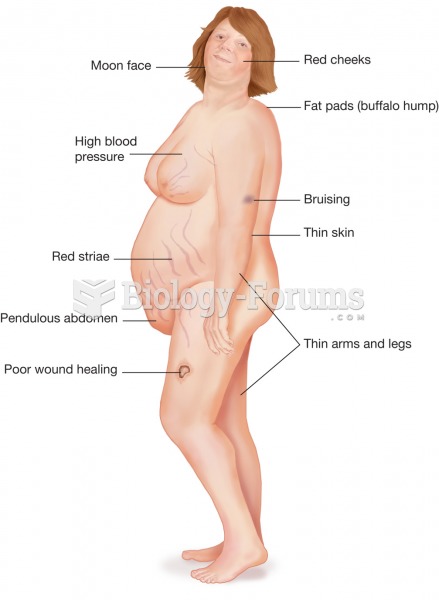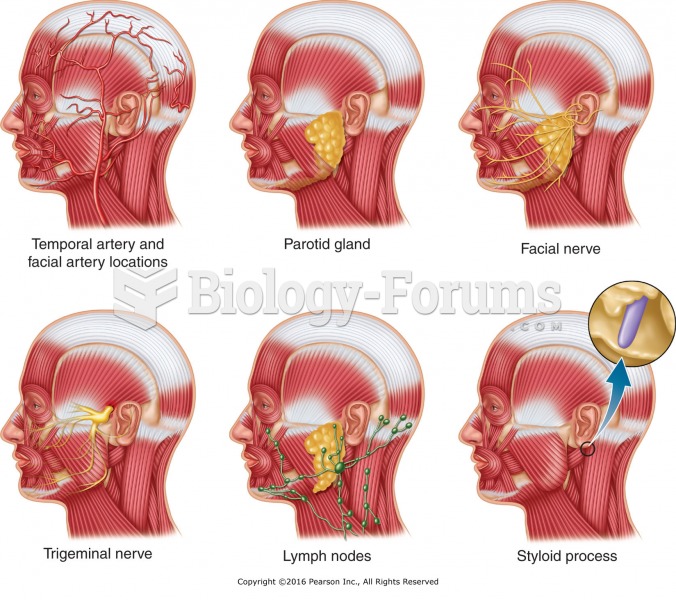|
|
|
If all the neurons in the human body were lined up, they would stretch more than 600 miles.
Pregnant women usually experience a heightened sense of smell beginning late in the first trimester. Some experts call this the body's way of protecting a pregnant woman from foods that are unsafe for the fetus.
When blood is exposed to air, it clots. Heparin allows the blood to come in direct contact with air without clotting.
Women are 50% to 75% more likely than men to experience an adverse drug reaction.
Though the United States has largely rejected the metric system, it is used for currency, as in 100 pennies = 1 dollar. Previously, the British currency system was used, with measurements such as 12 pence to the shilling, and 20 shillings to the pound.






